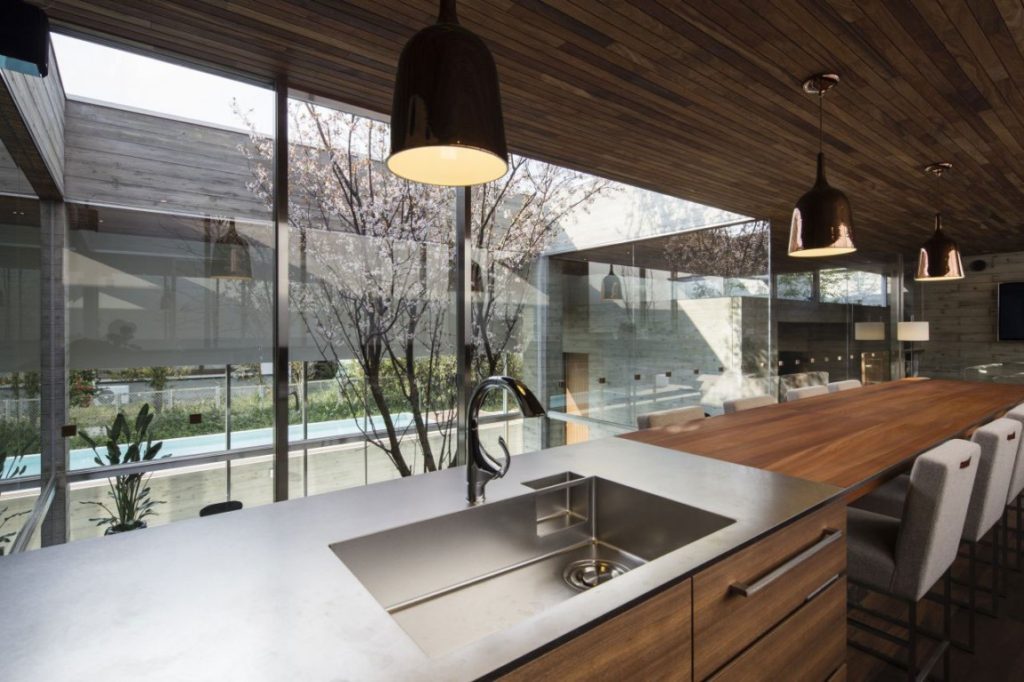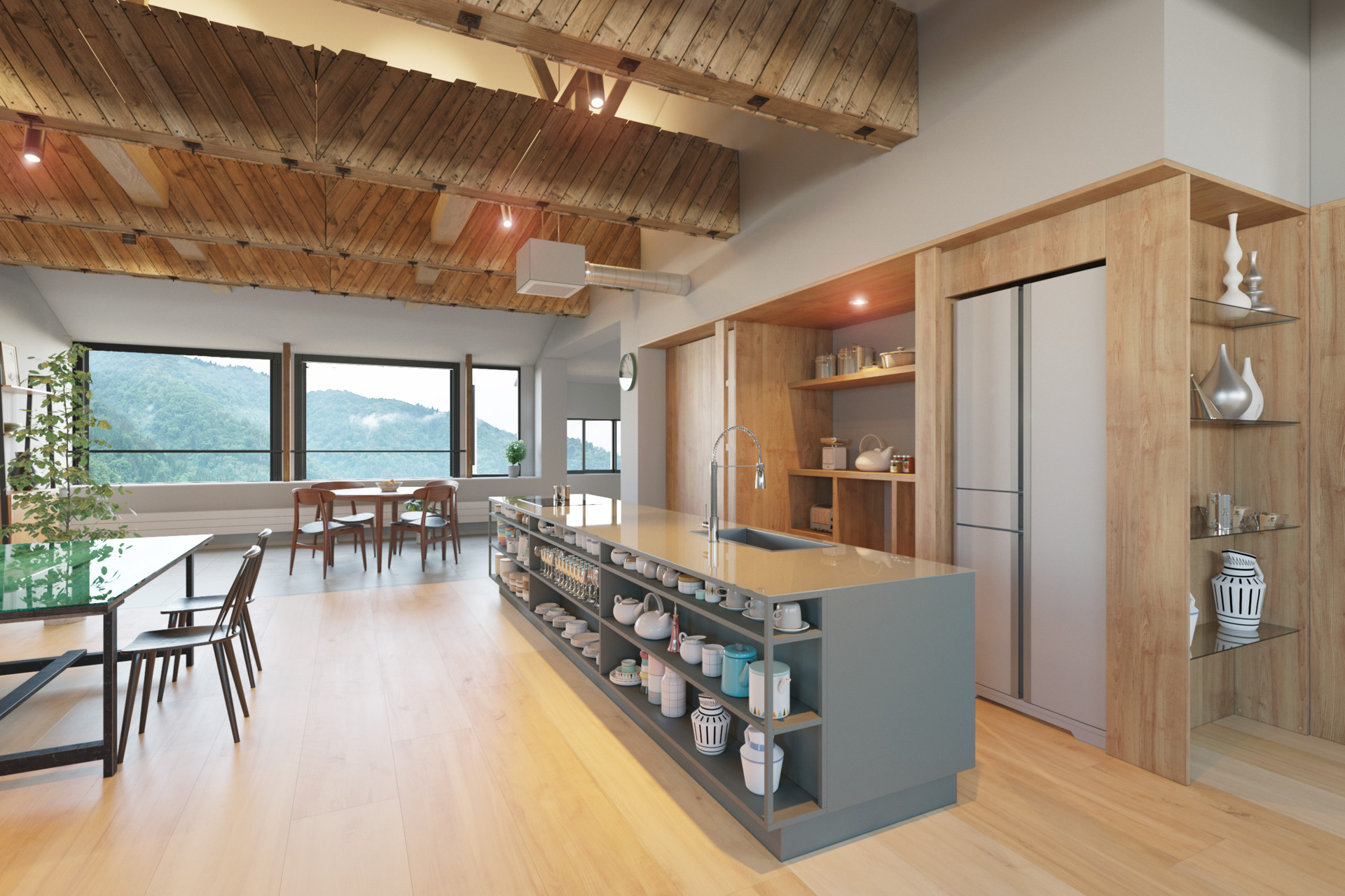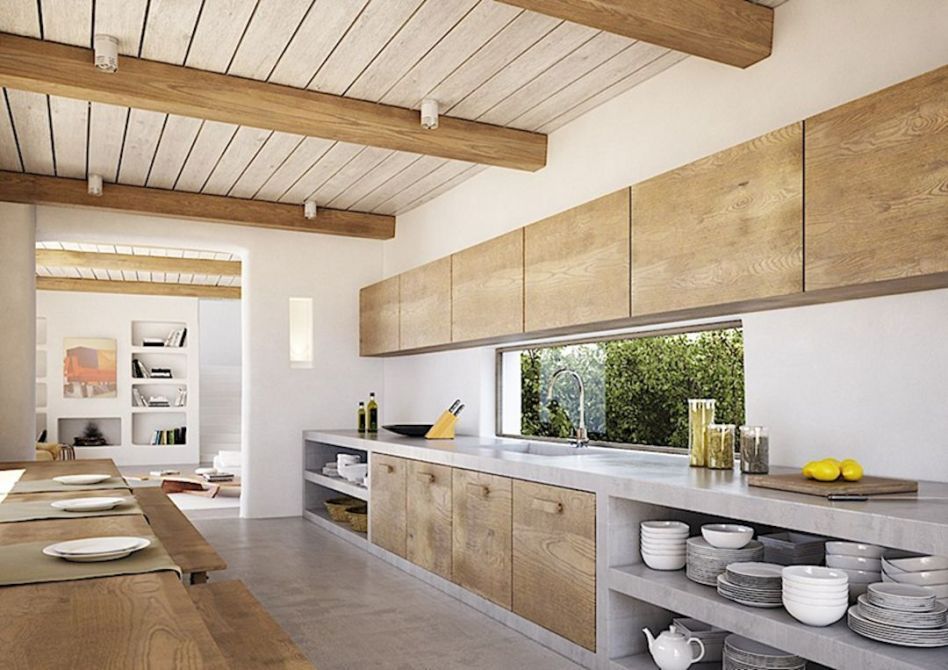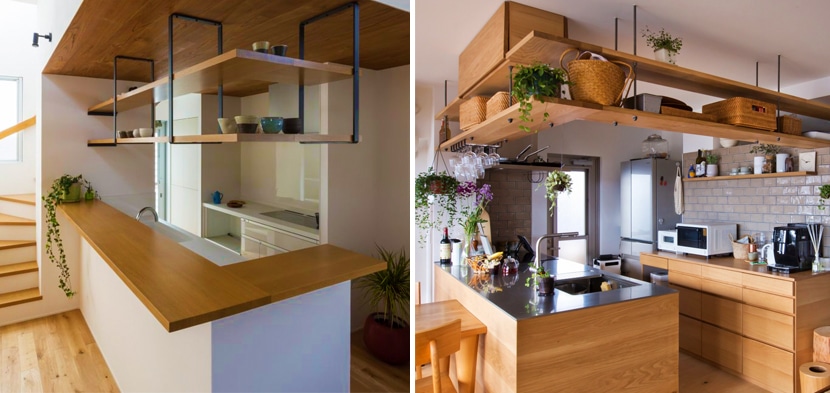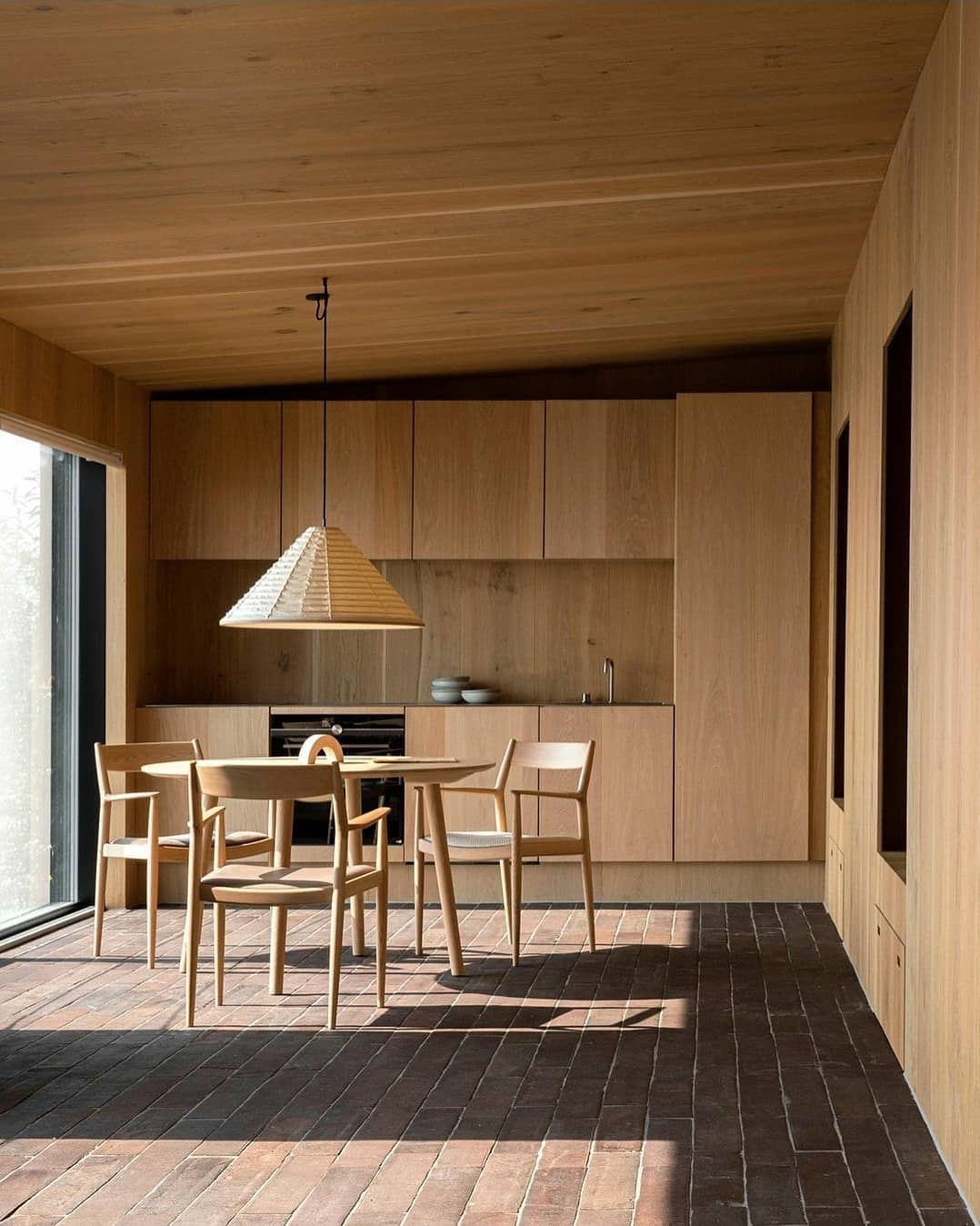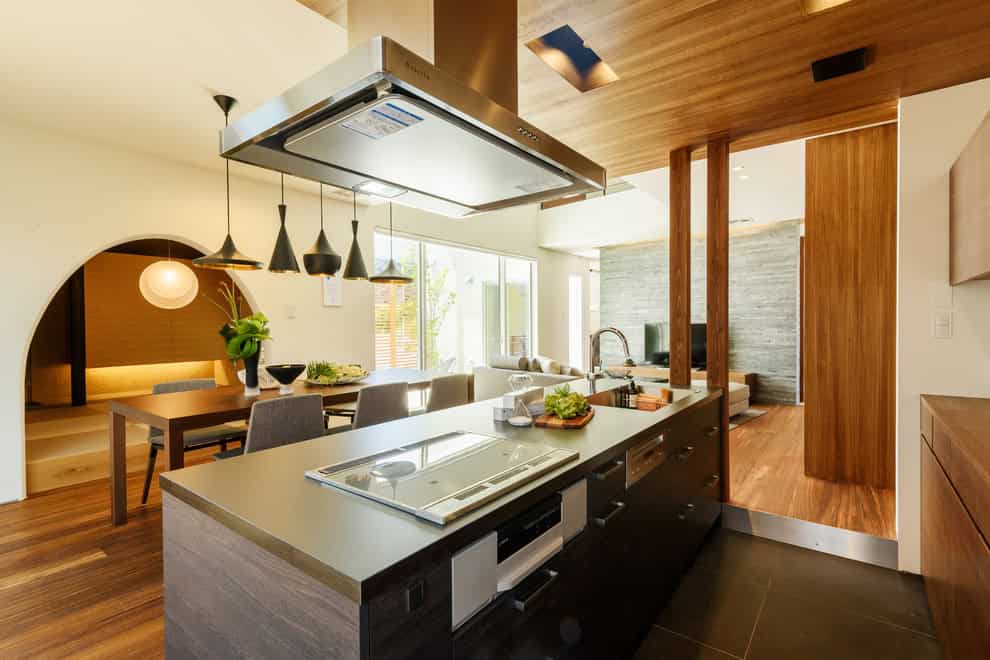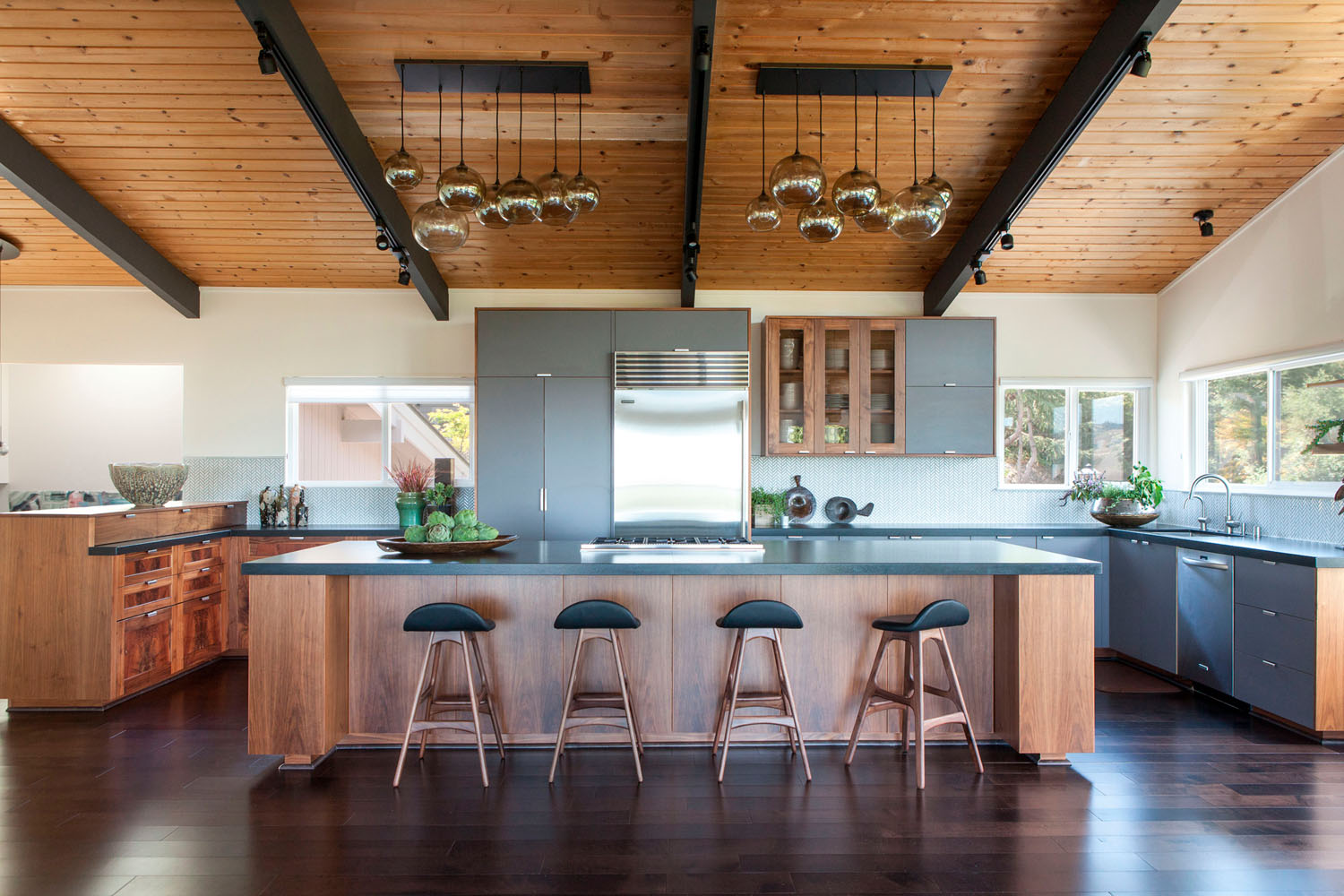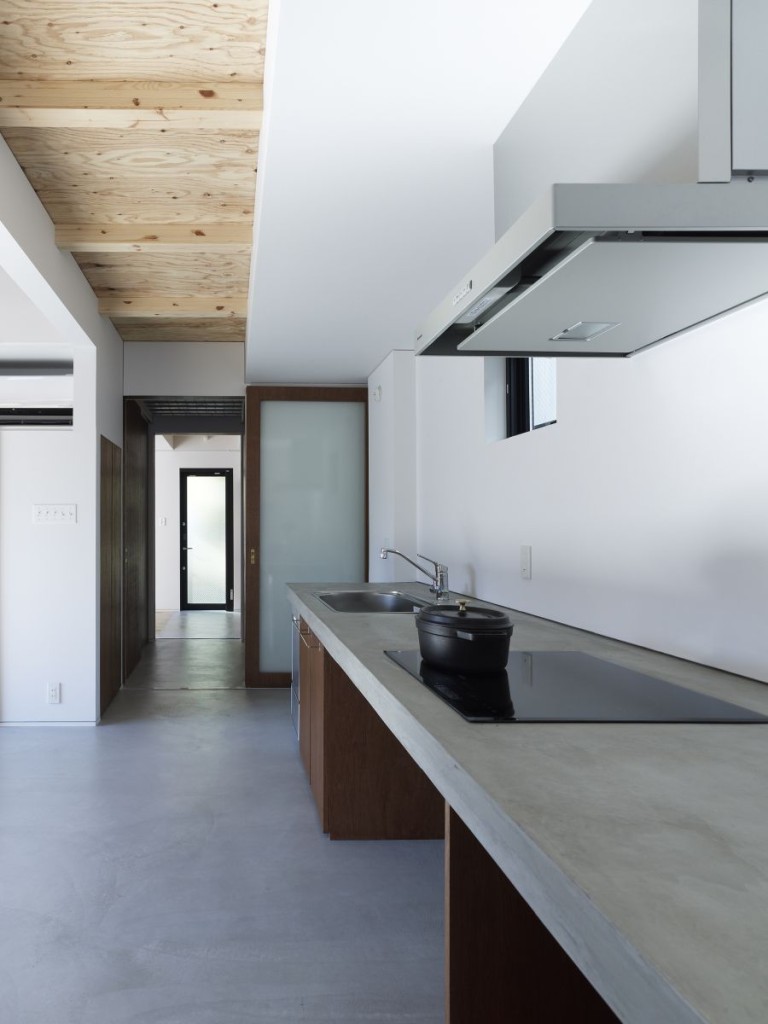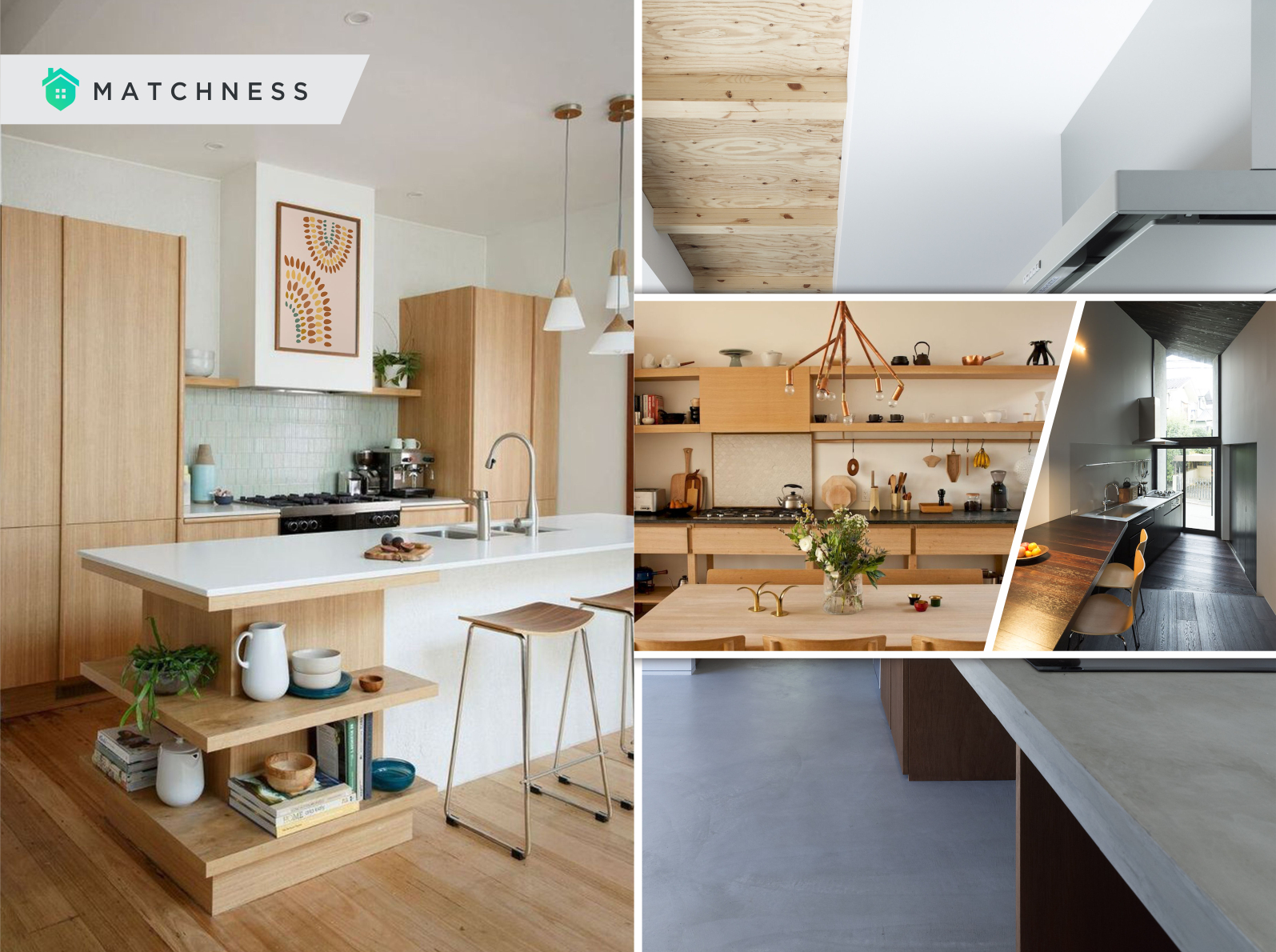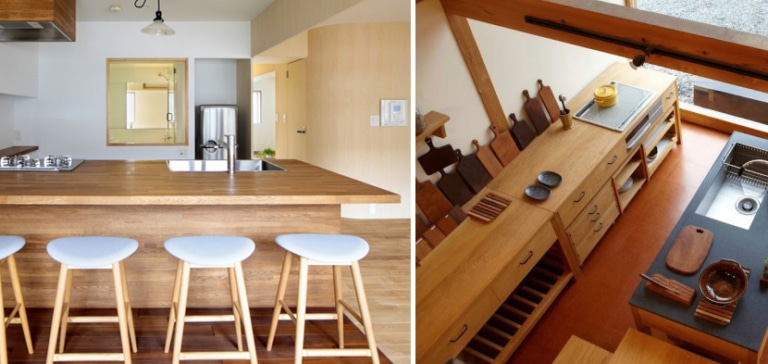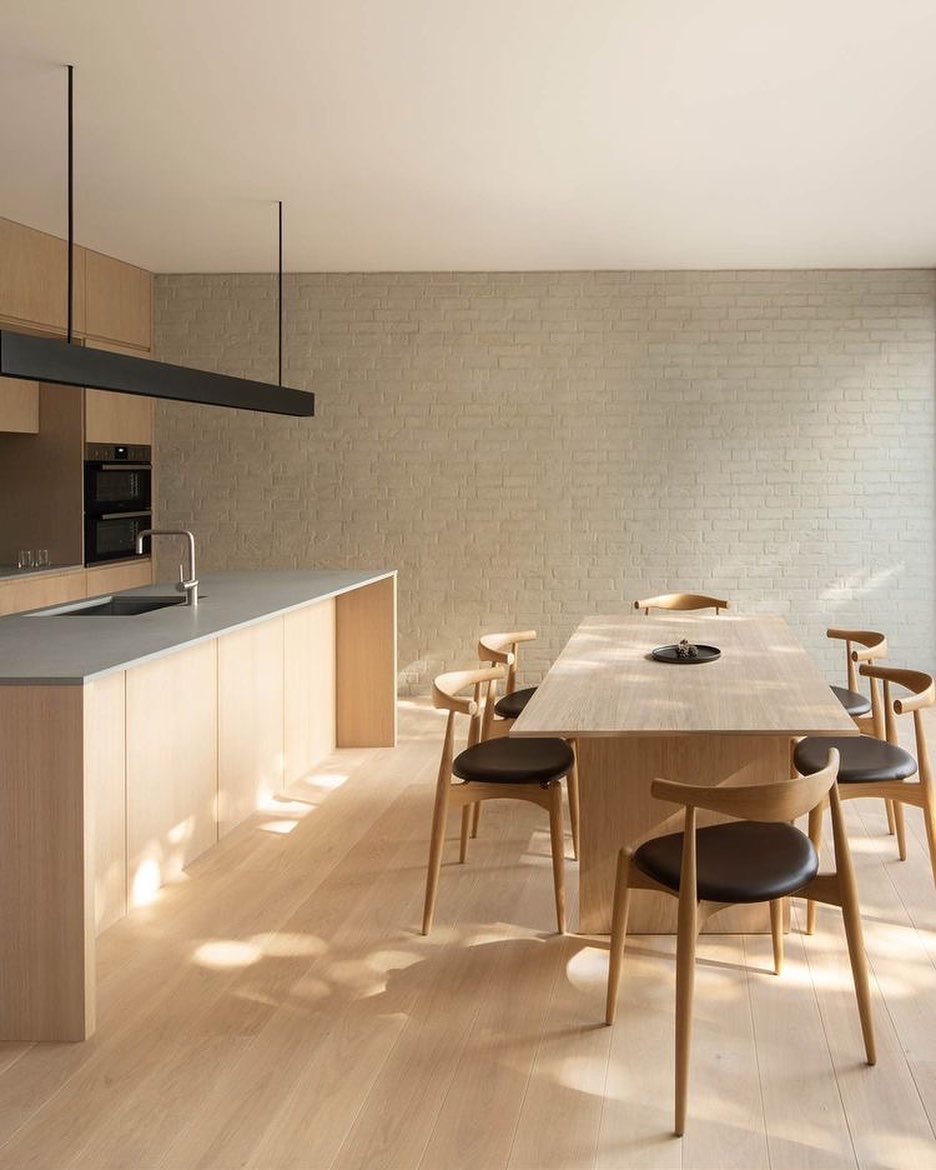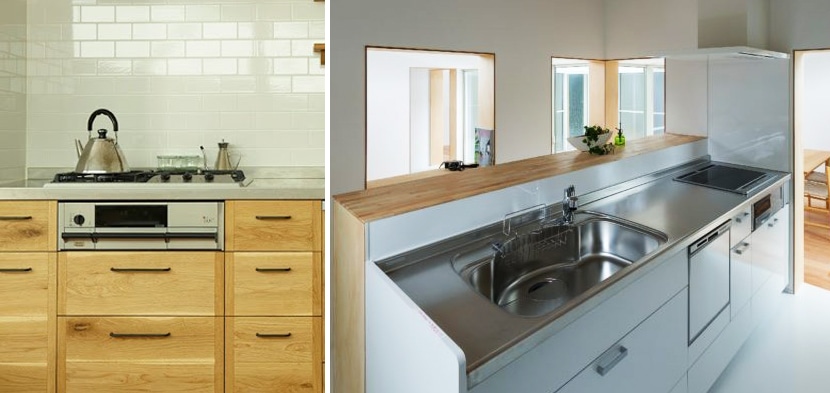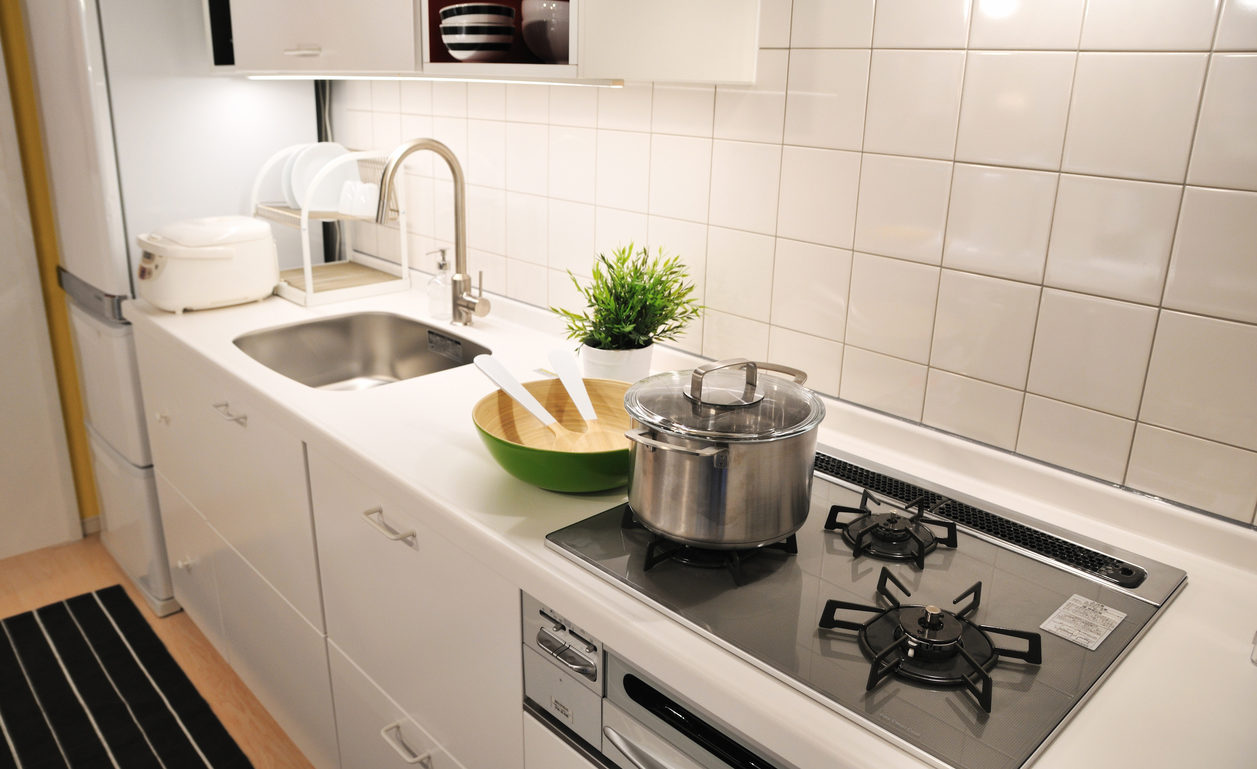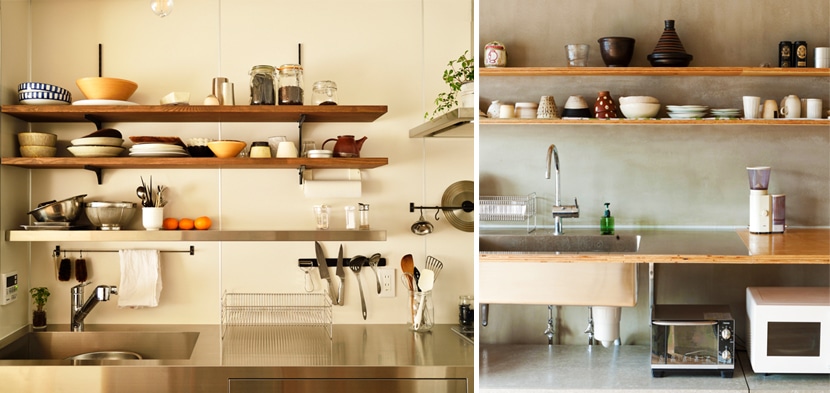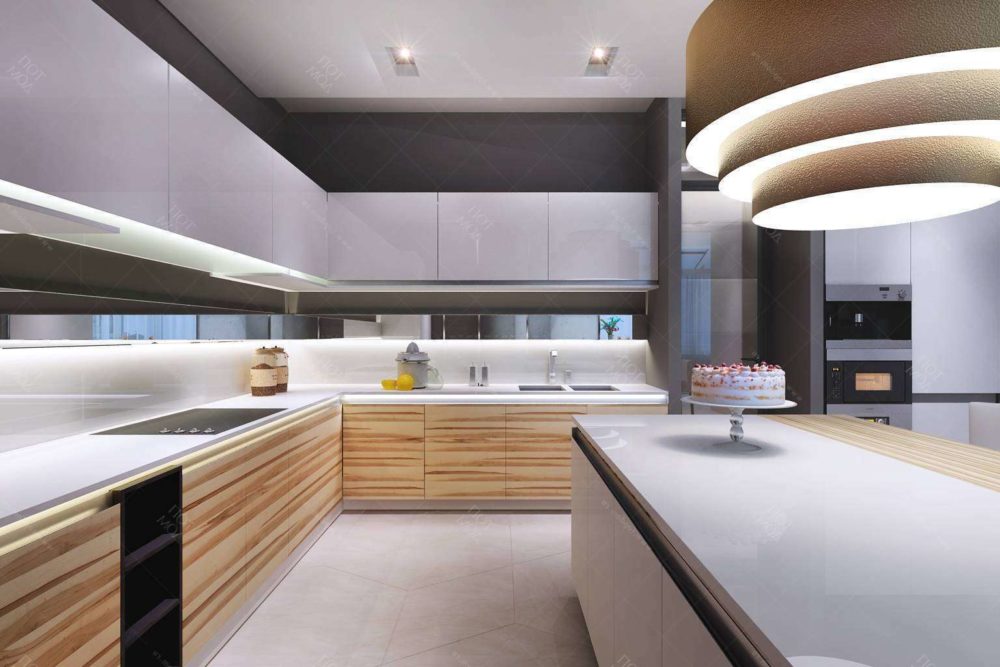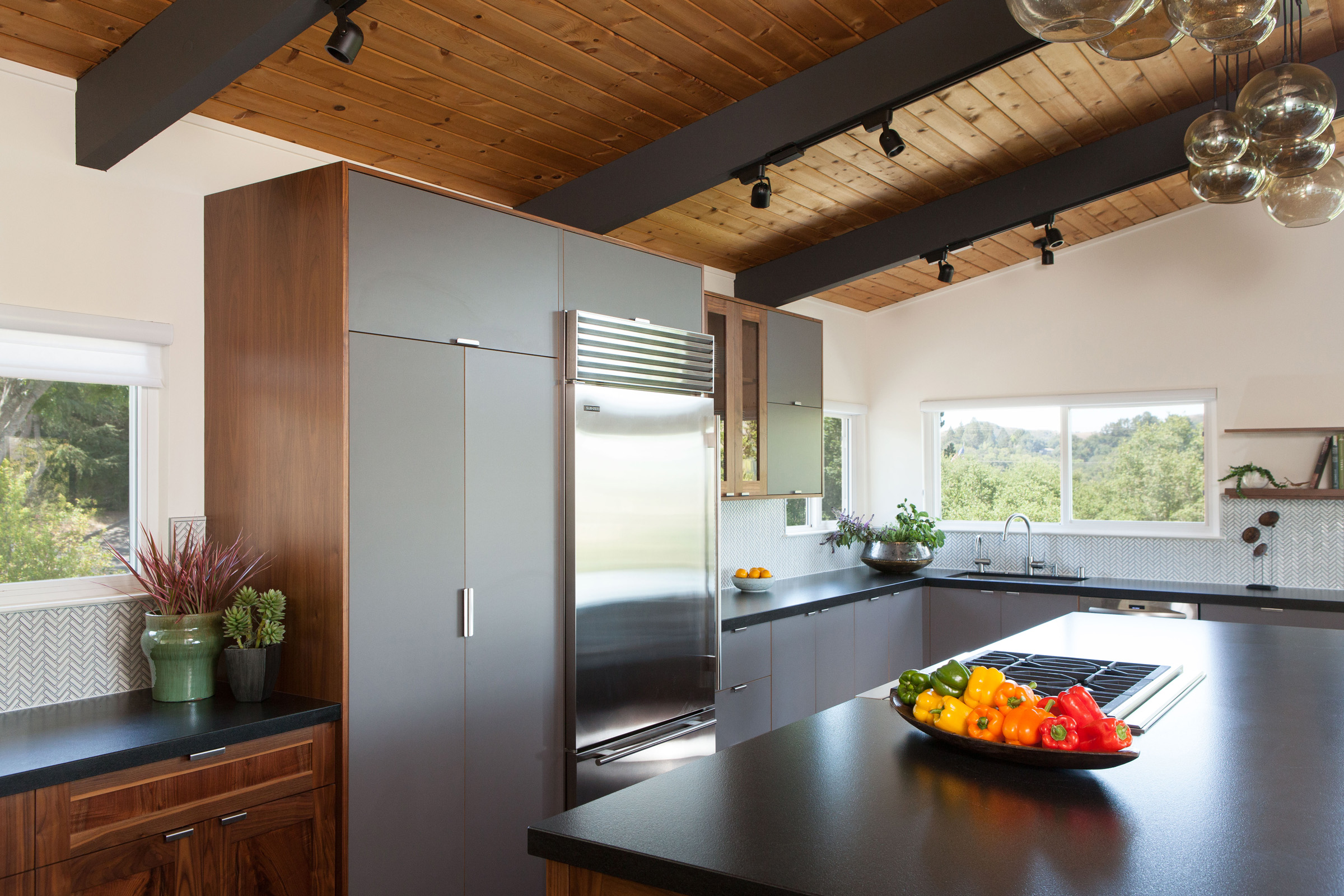Japan is known for its unique and intricate design styles, and the kitchen is no exception. Japanese kitchen design combines functionality, simplicity, and beauty in a harmonious way. If you're looking to give your kitchen a Japanese-inspired makeover, here are ten ideas to get you started.Japanese Kitchen Design: 10 Ideas for Your Home
1. Zen Aesthetics – Japanese design is all about creating a sense of tranquility and simplicity, and the kitchen is no different. To achieve this, opt for clean lines, muted colors, and natural materials like wood and stone. 2. Sliding Doors – Traditional Japanese homes use sliding doors to divide different spaces. Incorporate this into your kitchen design by using sliding doors for your cabinets or pantry, adding a touch of authenticity to your space. 3. Minimalist Storage – Japanese kitchens are known for their minimalistic approach to storage. Keep your countertops clutter-free by using hidden storage solutions, such as pull-out drawers and cabinets. 4. Tatami Mats – A staple in Japanese homes, tatami mats are made from woven straw and add warmth and texture to any space. Use them as a flooring option in your kitchen or as a cushioned seating area. 5. Open Shelving – Instead of traditional upper cabinets, opt for open shelving to display your dishes and kitchen essentials. This not only adds visual interest but also allows for easy access to your most-used items. 6. Natural Elements – Japanese design is heavily influenced by nature, so incorporating natural elements into your kitchen is a must. Consider adding a small indoor herb garden or using natural wood for your countertops. 7. Futon Table – A futon table is a low-lying table that can be used for both dining and cooking. It's a versatile piece of furniture that can easily be tucked away when not in use, making it perfect for smaller kitchens. 8. Tea Ceremony Corner – The Japanese tea ceremony is an important cultural tradition, and many homes have a designated corner for this ritual. Create your own tea ceremony corner in your kitchen by adding a small table and a set of tea utensils. 9. Paper Lanterns – Traditional Japanese lanterns add a soft and warm glow to any space. Incorporate them into your kitchen design by hanging them above your dining area or using them as pendant lights. 10. Fusion with Western Influences – Japanese design has also been influenced by Western styles, so don't be afraid to add a touch of modernity to your space. Consider incorporating a sleek and modern kitchen island or using bold colors for a pop of contrast.10 Japanese Kitchen Design Ideas
Japanese kitchen design is not just about aesthetics, but it also reflects the country's cultural values. The concept of ma, or negative space, is an essential element in Japanese design, and it can be seen in the minimalistic and clutter-free approach to kitchen design. The use of natural materials and the incorporation of nature also reflects the Japanese belief in living in harmony with the environment. This is why you'll often see elements like wood, stone, and plants in Japanese kitchens.Japanese Kitchen Design: A Cultural Perspective
Traditional Japanese kitchen design is heavily influenced by the country's history and culture. It typically features a low table for dining, sliding doors and screens for storage, and a hearth for cooking. The use of natural materials like wood, straw, and bamboo is also common. Incorporating elements of traditional Japanese design into your kitchen can add a unique and authentic touch to your space.Traditional Japanese Kitchen Design
Modern Japanese kitchen design takes the traditional elements and adds a touch of modernity. It combines sleek and clean lines with natural materials and often incorporates Western design influences. In a modern Japanese kitchen, you'll often see a mix of open shelving and hidden storage, a blend of natural and man-made materials, and a fusion of traditional and modern design elements.Modern Japanese Kitchen Design
Minimalism is a key aspect of Japanese design, and it can be seen in their approach to kitchen design as well. Japanese kitchens are known for their clean and clutter-free countertops, hidden storage solutions, and simplistic color palettes. To achieve a minimalist Japanese kitchen, opt for clean and simple lines, muted colors, and minimal decoration. Remember, less is more in Japanese design.Japanese Kitchen Design: Minimalist Style
Nature plays a significant role in Japanese design, and this is especially true in the kitchen. Incorporating natural elements like wood, stone, and plants not only adds a touch of authenticity but also creates a sense of harmony and balance in the space. Consider using natural wood for your countertops or adding a small indoor herb garden for a touch of greenery. You can even hang a few plants from the ceiling to add a unique and natural touch to your kitchen.Japanese Kitchen Design: Incorporating Natural Elements
Many Japanese homes have limited space, so maximizing every inch is essential. In a Japanese kitchen, this is achieved through hidden storage solutions, multi-functional furniture, and a minimalist approach to design. If you have a small kitchen, take inspiration from Japanese design by opting for hidden storage solutions, using multi-functional furniture like a futon table, and keeping your countertops clutter-free.Japanese Kitchen Design: Maximizing Small Spaces
Japanese design has been influenced by Western styles over the years, and this can be seen in modern Japanese kitchens. The fusion of traditional and modern design elements creates a unique and interesting space. Leverage this fusion by incorporating sleek and modern elements, like a kitchen island or bold colors, into your kitchen design. This will add a touch of modernity while still maintaining the essence of Japanese design.Japanese Kitchen Design: Fusion with Western Influences
To create a functional and beautiful Japanese-inspired kitchen, keep these tips in mind: - Use natural materials like wood, stone, and bamboo
- Keep your countertops clutter-free
- Incorporate elements of nature, like plants or a small indoor herb garden
- Use sliding doors or screens for storage
- Opt for hidden storage solutions
- Keep the color palette simple and muted
- Incorporate both traditional and modern elements
- Maximize small spaces with multi-functional furniture
- Add a touch of authenticity with traditional Japanese elements, like tatami mats or paper lanterns By following these tips, you can create a Japanese kitchen design that is both functional and beautiful, reflecting the unique and harmonious nature of Japanese design.Japanese Kitchen Design: Tips for Creating a Functional and Beautiful Space
Kitchen Design in Japan: Combining Function and Aesthetics
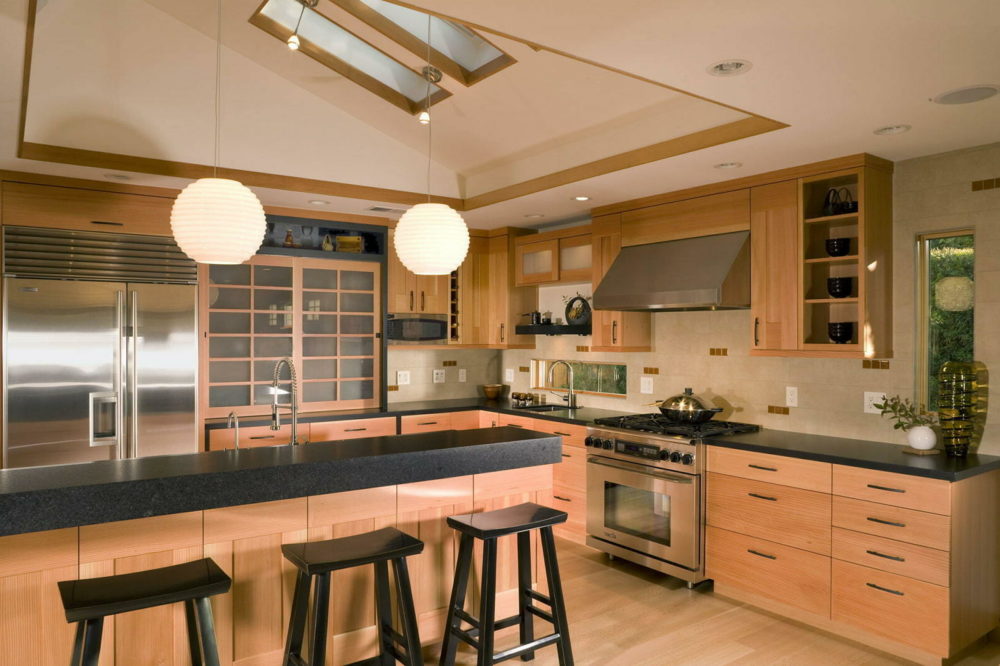
The Japanese Philosophy of Minimalism
 When one thinks of Japanese design, the first thing that may come to mind is minimalism. This philosophy is deeply ingrained in Japanese culture and is reflected in all aspects of life, including kitchen design. In Japan, the kitchen is seen as the heart of the home, a place where function and beauty come together seamlessly.
Minimalism
is not just about having less, but also about
creating a sense of calm and order
in the space. This is achieved through
clean lines, neutral colors, and clever storage solutions.
When one thinks of Japanese design, the first thing that may come to mind is minimalism. This philosophy is deeply ingrained in Japanese culture and is reflected in all aspects of life, including kitchen design. In Japan, the kitchen is seen as the heart of the home, a place where function and beauty come together seamlessly.
Minimalism
is not just about having less, but also about
creating a sense of calm and order
in the space. This is achieved through
clean lines, neutral colors, and clever storage solutions.
The Importance of Layout and Flow
 In Japanese kitchen design,
layout and flow
are given utmost importance. The kitchen is designed to be highly functional, with everything within easy reach. The
work triangle
principle is often used, with the sink, stove, and refrigerator forming a triangular shape for efficient movement.
Open shelving
and
lower countertops
are also common features, allowing for easier access to items and promoting a sense of openness in the space.
In Japanese kitchen design,
layout and flow
are given utmost importance. The kitchen is designed to be highly functional, with everything within easy reach. The
work triangle
principle is often used, with the sink, stove, and refrigerator forming a triangular shape for efficient movement.
Open shelving
and
lower countertops
are also common features, allowing for easier access to items and promoting a sense of openness in the space.
Bringing Nature Indoors
 Another key aspect of Japanese kitchen design is the
incorporation of nature
. This is evident in the use of natural materials such as
wood and stone
, as well as the inclusion of
indoor plants
. This not only adds a touch of
warmth and texture
to the space but also aligns with the Japanese concept of
bringing the outdoors in
. It also promotes a sense of
harmony and balance
in the kitchen, which is essential in Japanese design.
Another key aspect of Japanese kitchen design is the
incorporation of nature
. This is evident in the use of natural materials such as
wood and stone
, as well as the inclusion of
indoor plants
. This not only adds a touch of
warmth and texture
to the space but also aligns with the Japanese concept of
bringing the outdoors in
. It also promotes a sense of
harmony and balance
in the kitchen, which is essential in Japanese design.
The Influence of Traditional Japanese Architecture
 Japanese kitchen design is also heavily influenced by traditional Japanese architecture.
Sliding doors
or
fusuma
are often used to create a sense of
flexibility and openness
in the space. Traditional wooden elements such as
shoji screens
and
tatami mats
may also be incorporated into the design, adding a touch of
authenticity and elegance
to the kitchen.
In conclusion,
kitchen design in Japan
goes beyond just creating a functional space; it is an art form that combines function and aesthetics. The use of minimalism, efficient layout and flow, incorporation of nature, and traditional Japanese elements all come together to create a kitchen that is not only beautiful but also promotes a sense of
peace and harmony
in the home.
Japanese kitchen design is also heavily influenced by traditional Japanese architecture.
Sliding doors
or
fusuma
are often used to create a sense of
flexibility and openness
in the space. Traditional wooden elements such as
shoji screens
and
tatami mats
may also be incorporated into the design, adding a touch of
authenticity and elegance
to the kitchen.
In conclusion,
kitchen design in Japan
goes beyond just creating a functional space; it is an art form that combines function and aesthetics. The use of minimalism, efficient layout and flow, incorporation of nature, and traditional Japanese elements all come together to create a kitchen that is not only beautiful but also promotes a sense of
peace and harmony
in the home.







